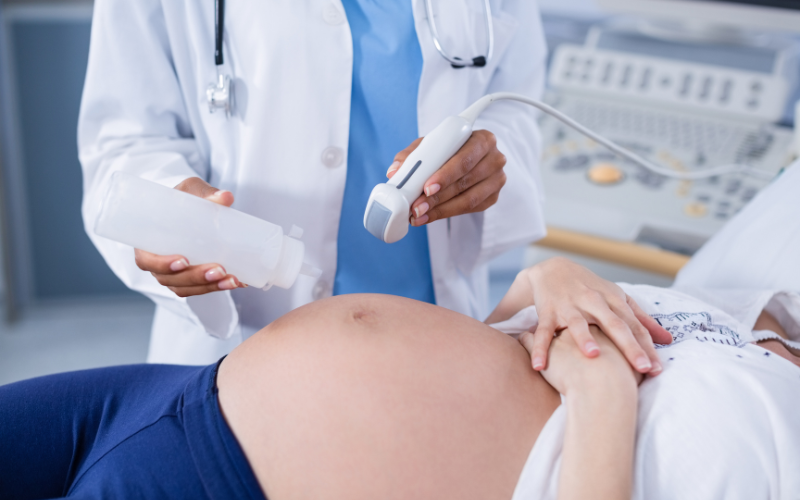Author – Dr. Suhaim Afsar MBBS, PGPN(Boston), Fellowship in Neonatology RCPCH (UK), MRCPCH (UK), DNB (Pediatrics)
Consultant – Neonatologist and Paediatrician at Motherhood Hospital, Mysore
Diaper rash is a common problem in infants and young children that occurs when the skin becomes irritated and inflamed in the diaper area. Diaper rash can cause redness, swelling, and tenderness of the skin, and it can be uncomfortable for the child.
Types of diaper rash in infants and young children
- Irritant dermatitis: This is the most common type of diaper rash and is caused by irritation from wet or dirty diapers. It can cause redness, swelling, and tenderness of the skin.
- Allergic dermatitis: This type of diaper rash is caused by an allergy to a particular substance, such as a chemical in a diaper or diaper wipe. It can cause redness, swelling, and bumps or pimples on the skin.
- Yeast infection: Diaper rash can sometimes be caused by a yeast infection, which is caused by an overgrowth of Candida albicans. Yeast infections can cause red, raised, and scaly patches of skin that may be painful or itchy.
- Seborrheic dermatitis: This type of diaper rash is caused by an overproduction of oil in the skin and can cause red, greasy, and scaly patches of skin on the diaper area and other parts of the body.
It’s important to identify the type of diaper rash and the underlying cause in order to properly treat it.

Symptoms of diaper rashes
Redness and inflammation of the skin: The skin may appear red, swollen, and tender to the touch.
- Small bumps or pimples: The skin may be covered in small bumps or pimples.
- Scaling or peeling: The skin may be dry and flaky, and may peel or scale.
- Rash that spreads beyond the diaper area: The rash may spread beyond the diaper area to the thighs, buttocks, or abdomen.
- Discomfort or pain: The child may be fussy or irritable, and may be uncomfortable or in pain when the diaper area is touched.
A lot of people believe that using cloth diapers is better as opposed to disposable diapers. Many think that only disposable diapers can cause a diaper rash. However, that isn’t true. Both cloth diapers and disposable diapers have their own set of pros and cons. Here are some factors to consider when deciding between cloth and disposable diapers:
Cloth diapers
Pros:
- Cloth diapers are reusable, which means that they can be washed and used again, saving money in the long run.
- Cloth diapers are typically made from natural materials, which may be more comfortable for some babies and may have a lower environmental impact.
- Some parents find that cloth diapers are more absorbent and leak less than disposable diapers.
Cons:
- Cloth diapers require more work, as they need to be washed and folded after each use.
- Cloth diapers can be less convenient when you are on the go, as they need to be carried with you and changed in a private location.
- Cloth diapers may be more expensive upfront, as you will need to invest in a supply of diapers and possibly a diaper pail and diaper liners.
Disposable diapers
Pros
- Disposable diapers are convenient, as they can be thrown away after each use and do not require washing.
- Disposable diapers are widely available and can be purchased at most stores.
- Disposable diapers may be more absorbent and leak less than some cloth diapers.
Cons
- Disposable diapers are not reusable, which means that they create more waste and have a larger environmental impact.
- Disposable diapers may contain chemicals or fragrances that can cause irritation or allergies in some infants.
- Disposable diapers may be more expensive in the long run, as you will need to purchase a new supply of diapers regularly.
Ultimately, the decision between cloth and disposable diapers will depend on your personal preferences and circumstances. It’s important to consider the pros and cons and choose the option that best meets the needs of your family.
That apart, a diaper rash can have a number of causes, including
- Wet or dirty diapers: When an infant’s skin is in contact with urine or stool for an extended period of time, it can lead to irritation and diaper rash.
- Tight fitting diapers: Tight fitting diapers can cause irritation by rubbing against the skin.
- Allergies: Diapers and diaper wipes can contain chemicals or fragrances that can cause irritation or allergies in some infants.
- Antibiotics: Antibiotics can alter the balance of bacteria in the gut, leading to diaper rash.
- Yeast infections: Diaper rash can sometimes be caused by a yeast infection.
How to prevent Diaper Rash
- Change diapers frequently: This will help to keep the skin dry and prevent irritation.
- Use a diaper rash cream: Diaper rash creams can help to soothe and protect the skin. Look for creams that contain zinc oxide or petrolatum, as these ingredients can help to create a barrier on the skin to protect against irritation. There are many different diaper rash creams available, and it’s important to choose one that is appropriate for your child’s age and skin type. Some diaper rash creams are designed for use on newborns, while others are formulated for use on older infants and children. It’s also important to read the label and avoid products that contain ingredients that may be irritating or allergic to your child’s skin.
- Avoid tight fitting diapers: Choose diapers that fit well and do not rub against the skin.
- Avoid harsh chemicals: Use unscented wipes and avoid using harsh detergents on cloth diapers.
- Allow the skin to air out: If possible, let the diaper area air out for a few hours each day to allow the skin to heal.
- Use a warm water rinse: After changing a diaper, you can gently clean the area with warm water and a soft cloth or cotton balls. Avoid using soap, as it can be drying and irritating to the skin.
- Apply cornstarch or baking soda: Cornstarch and baking soda can help to absorb moisture and soothe irritation. Sprinkle a small amount over the diaper area after each diaper change.
There are a number of oils that can be used to treat diaper rash at home. Here are a few options to consider
- Coconut oil: Coconut oil has antimicrobial properties and can help to soothe and moisturise the skin.
- Calendula oil: Calendula oil is derived from the marigold flower and has anti-inflammatory and healing properties.
- Chamomile oil: Chamomile oil has soothing and calming properties and can be used to help reduce inflammation.
- Lavender oil: Lavender oil has antifungal and antibacterial properties and can help to reduce irritation.
It’s important to dilute these oils with a carrier oil, such as almond oil or jojoba oil, before applying them to the skin. It’s also important to patch test the oil on a small area of skin before using it on the diaper area, as some infants may be sensitive to certain oils.
If a diaper rash persists or appears to be getting worse, it’s important to consult with your Paediatrician for treatment and to identify the cause of the rash.
At Motherhood Hospitals, we have a team of experienced super specialists backed by the latest in infrastructure and facilities. We have the best Paediatrician Mysore, Mysuru. The Department of Paediatrics at Motherhood consists of a team of paediatric specialists that cater to all the needs of children, across age groups, and provide the best care for your child’s development. Do take an appointment with the best childcare hospital in Mysore, Mysuru at a centre closest to you. Meet with our doctors who will carry out the required investigations, diagnose the issue and recommend the most appropriate treatment, enabling you to lead an active life.
If you wish to get in touch with Dr. Suhaim Afsar, please book your appointment here.


 Toll Free Number
Toll Free Number












